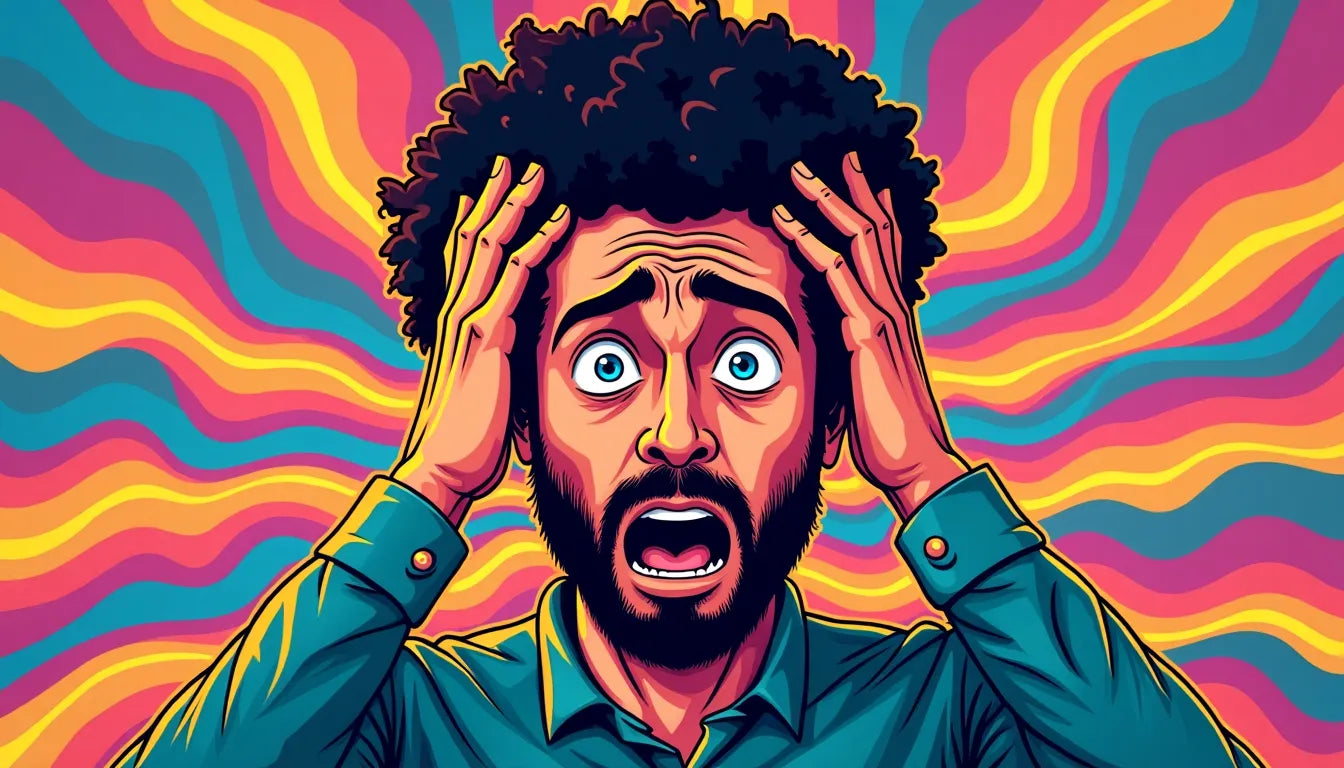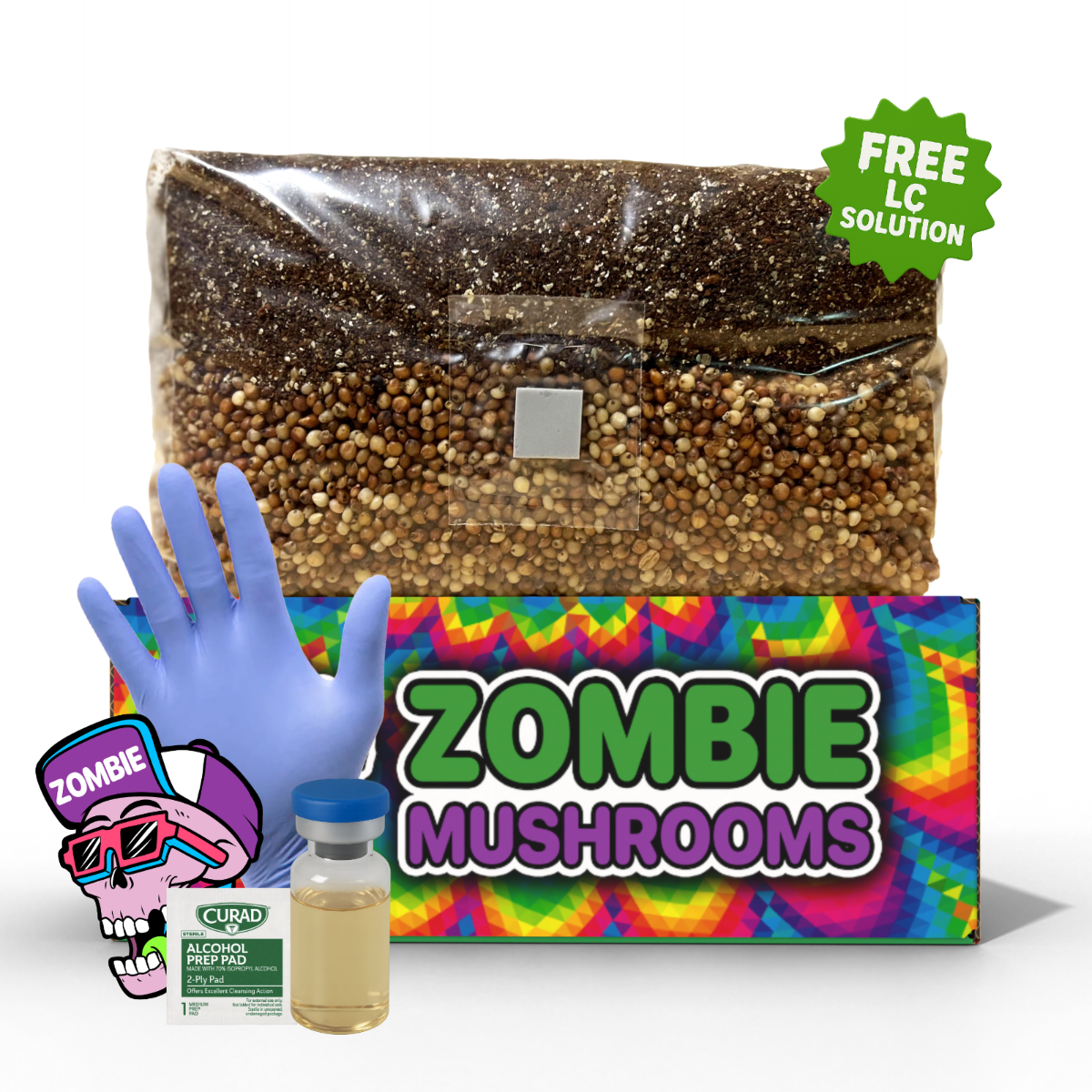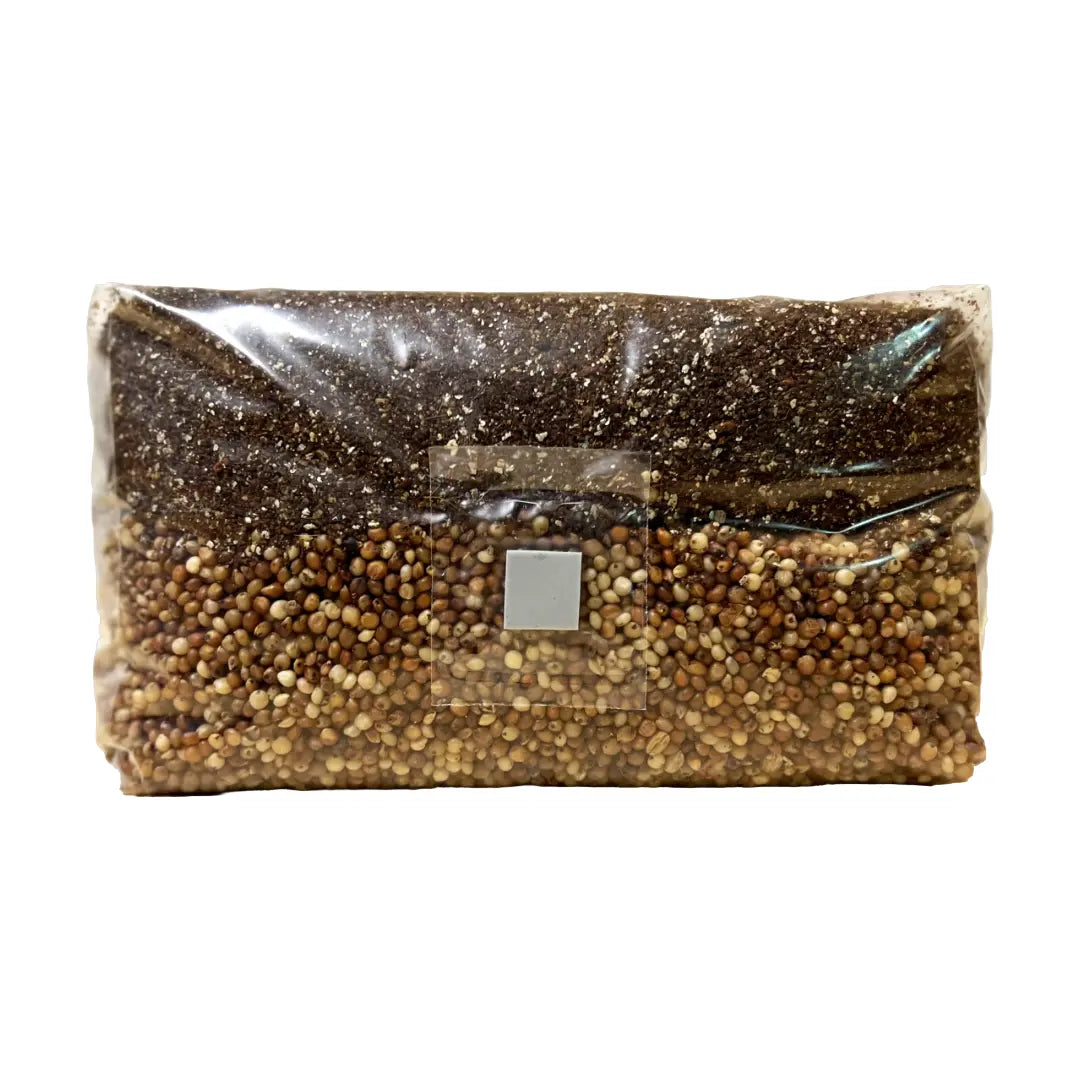Anxiety disorders are among the most common mental health conditions in the world today, with millions of people seeking relief from chronic stress, panic, and debilitating fears. Traditional treatments, such as selective serotonin reuptake inhibitors (SSRIs) and cognitive-behavioral therapy (CBT), are effective for some, but many individuals continue to struggle with their symptoms. This has led to a growing interest in alternative therapies—psychedelic-assisted treatments being among the most promising options. One psychedelic compound, 2,5-Dimethoxy-4-Iodoamphetamine (DOI), is now showing potential in reducing anxiety by acting on specific brain neurons, offering hope for those who have found other treatments to be ineffective.
In this article, we will explore the intricacies of anxiety, how DOI works, what makes it unique compared to other psychedelics, and how it could revolutionize the treatment of anxiety.

Anxiety and Its Impact on Mental Health
Anxiety disorders affect millions across the globe and include a variety of conditions such as:
-
Generalized Anxiety Disorder (GAD): Persistent and excessive worry about life events.
-
Panic Disorder: Characterized by sudden, uncontrollable panic attacks.
-
Social Anxiety Disorder: Fear and discomfort in social situations.
-
Obsessive-Compulsive Disorder (OCD): Repeated, unwanted thoughts (obsessions) and behaviors (compulsions).
These conditions can dramatically impair a person’s quality of life, leading to difficulties in personal relationships, professional challenges, and even physical health issues like chronic fatigue, headaches, and muscle tension. Furthermore, anxiety is often worsened by complex feedback loops where worrying about anxiety itself creates additional stress.
Shortcomings of Traditional Treatments
While SSRIs and CBT have offered relief to many, there are those who experience persistent symptoms despite these interventions. For some, SSRIs come with side effects such as:
-
Weight gain
-
Sexual dysfunction
-
Insomnia or excessive sleepiness
-
Emotional blunting (feeling 'numb')
CBT, while extremely beneficial, requires a long-term commitment and may not be as effective when anxiety is very severe. As patients grow weary of traditional options, many have begun turning towards alternatives with transformative potential, such as psychedelic-assisted therapy.

The Rise of Psychedelic-Assisted Therapy
A Brief History of Psychedelics
Though psychedelics have long been stigmatized in modern medical practices due to their association with countercultural movements in the 1960s, they have a far deeper, more respected history among indigenous groups around the world. For thousands of years, psychedelic plants and compounds were used for spiritual, medicinal, and religious purposes in a variety of ancient cultures. It wasn’t until psychedelic prohibition began in the 20th century that research on their therapeutic benefits was largely shut down.
Fast forward to recent years, and a renaissance in psychedelic research is now underway. This shift can be largely attributed to the following findings:
-
Emerging clinical trials have demonstrated that psychedelics, when used in safe, supervised settings, can effectively reduce symptoms associated with conditions like depression, anxiety, PTSD, and even substance use disorders.
-
Psychotherapy that incorporates psychedelics has yielded remarkably long-lasting therapeutic benefits, with patients reporting that they maintain positive effects for months, and sometimes years, after just 2-3 sessions.
Psychedelics in Modern Medicine
Among the most studied psychedelics for mental health treatment are psilocybin (commonly found in "magic mushrooms"), LSD (lysergic acid diethylamide), MDMA (ecstasy), and ayahuasca. Although these substances differ in structure and the intensity/type of experience they generate, there is a growing consensus that with guided therapeutic support, they can bring about profound mental health improvements.
DOI (2,5-Dimethoxy-4-Iodoamphetamine), though not as popular or well-known as these compounds, is emerging as an important tool worth scientific exploration, particularly in its ability to target anxiety.

What is DOI?
2,5-Dimethoxy-4-Iodoamphetamine (DOI) is a psychedelic compound belonging to the phenethylamine family, similar to other compounds like mescaline found in certain cacti species. DOI holds a reputation primarily as a psychedelic research chemical rather than a compound used for recreational or ceremonial purposes.
First synthesized in the mid-20th century, DOI acts as a serotonergic psychedelic, meaning it works by modulating the serotonin system in the brain, more specifically through activating 5-HT2A receptors. This specific subtype of serotonin receptor is well-known for its ability to affect mood, cognition, and emotional regulation, making it an ideal target for potential treatments of mood disorders like anxiety and depression.
Unlike more recognizable psychedelics like psilocybin or LSD, DOI has limited use outside of academic and research settings. This is partly because researchers are still gathering evidence on its short-term and long-term effects, potential therapeutic benefits, and safety protocols in human populations.

How Does DOI Work in the Brain?
At a neurochemical level, DOI’s primary mode of action lies in modulating serotonin activity through 5-HT2A receptors. These receptors are plentiful in areas of the brain that regulate:
-
Mood (e.g., the prefrontal cortex)
-
Threat perception and emotional responses (e.g., the amygdala)
-
Motivation, learning, and memory
Here's what DOI does in the brain:
-
Activation of 5-HT2A Receptors: Serotonin is a neurotransmitter often associated with feelings of happiness and well-being. DOI targets these receptors, especially those located in brain regions that are crucial to mood stabilization.
-
Alteration of Neuronal Communication: In certain regions, DOI seems to prompt phenomena such as neurotransmitter switching, where neurons begin using different chemical messengers than they normally do. This kind of switching can change how the brain interprets emotional input, potentially reducing symptoms of anxiety.
-
Calming Overactive Threat Responses: Some studies suggest that DOI helps regulate overactive responses to perceived threats, particularly by calming amygdala circuits. The amygdala, often referred to as the brain’s "panic button," plays a critical role in emotional responses, particularly fear. By adjusting how the amygdala processes fear signals, DOI might prevent hyper-reactivity to anxiety-inducing stimuli and foster more adaptive emotional responses.
While this understanding is still evolving, it demonstrates that DOI doesn’t just flood the brain with pleasurable feelings or artificial highs like many traditional medications—it interacts at a fundamental neurological level to reshape how the brain experiences emotions.

Research Supporting DOI’s Anxiety-Relief Capabilities
DOI and Neural Pathways
Studies with animal models are shedding light on the potential of DOI to treat mood disorders by targeting specific cells and circuits in the brain. For example, the amygdala, which serves as the brain's center for emotional responses (especially fear and anxiety), shows distinct patterns of activity when animals are dosed with DOI.
-
Preliminary research indicates that DOI activates clusters of neurons in the amygdala tied to fear-based responses, but instead of exacerbating anxiety, DOI seems to modulate these neural circuits, causing them to respond more calmly to stimuli that would otherwise create stress.
-
Experimental results further suggest the neural pathways DOI gets engaged in may involve directly dampening excessive fear responses and fostering greater emotional regulation than other classic psychedelics.
Cross-Species Findings
A major breakthrough in our understanding of DOI's specific action comes from recently conducted cross-species comparisons. Such studies assess patterns of anxiety-related behavior and neural activity between different species like mice and humans. Findings indicate that distinct clusters of brain cells across species are responsible for emotional processing, and these cell clusters exhibit certain anxiety-related markers that DOI specifically targets.
While human-based clinical studies are still in their infancy, these results suggest pivotal anxiety-processing neurons could be better regulated with compounds like DOI.

Psychedelics: Targeting Anxiety Through Neural Pathways
Sex-Specific Differences in Anxiety Processing
Intriguingly, it has been found that males and females may process fear and anxiety using sex-specific neural pathways. For instance, while male and female mice showed similar outward responses to threats, they activated different neuronal networks to produce these actions. This revelation has significant implications for personalized treatments. If psychedelic compounds like DOI could target these sex-specific circuits, they could offer personalized treatment options—tailored to specific biological needs—which could outperform one-size-fits-all approaches to anxiety treatment.
This discovery also highlights the critical role of precision medicine in the future of mental health treatment, where interventions—whether psychedelic or otherwise—could be tailored to each patient's unique brain architecture.

What Makes DOI Unique?
While various psychedelics affect serotonin receptors, DOI is notable for its specific action on 5-HT2A receptors and its impact on anxiety-related brain circuits.
Hallucination-Free Therapeutic Window
Unlike psilocybin or LSD, which often produce vivid hallucinations and intense emotional experiences, DOI is regarded for its calm-inducing effects without causing overwhelming psychological trips. This makes DOI especially intriguing for individuals focusing specifically on anxiety alleviation, as the sometimes unpredictable, boundary-dissolving effects of traditional psychedelics could feel destabilizing, especially for people prone to stress and fear.
In other words, while the transpersonal or mystical experience on psychedelics can be life-changing for some, many anxiety sufferers may seek a therapeutic experience that reshapes their mental health without the associated risk of overwhelming hallucinations or dissociative effects. DOI seems to offer a middle ground—profound therapeutic potential with less risk of overwhelming states.
Long-Term Impact on Neuroplasticity
Recent research also hints that DOI might stimulate neuroplasticity, the brain’s capacity to reorganize and generate new neuronal connections. This is a crucial concept in the healing of anxiety disorders, where maladaptive circuits often become ingrained as repetitive thought patterns.
By encouraging adaptive brain signaling through long-term modulation of threat-sensitive brain regions, DOI could potentially repair faulty brain wiring linked with chronic stress or trauma.

Potential Benefits of DOI-Based Therapy for Anxiety
DOI represents a unique alternative in the growing arsenal of psychedelic compounds being evaluated for their mental health benefits, with some potentially significant advantages:
-
Direct Modulation of Anxiety Circuits: Unlike SSRIs or benzodiazepines, which primarily adjust serotonin or GABA activity system-wide or mitigate symptoms, DOI’s targeted action offers the possibility of changing the firing activity of specific neurons.
-
Non-Addictive and Low Risk of Dependence: Unlike benzodiazepines (Xanax, Ativan), which carry the risk of addiction and rebound anxiety when stopped, initial research suggests low potential for substance abuse with DOI. Early findings also suggest DOI may not lead to habitual use, making it a sustainable therapy.
-
Possibility of Long-Lasting Changes: One of the most exciting prospects of DOI-based therapy centers on its reputed ability to offer lasting changes to the brain's regulation of anxiety. There’s a chance that only 1-2 treatment sessions could bring benefits that extend for months or longer, as seen in other psychedelic-assisted treatments.
Beyond Symptom Management: Full Restoration of Mental Health?
Finally, a psychedelic like DOI may enable more fundamental changes than standard anti-anxiety medication which largely aims to suppress symptoms temporarily. DOI could support transformational shifts in psychological patterns, fostering deeper and more permanent relief.

Safety Considerations and Ethical Concerns
As with any psychedelic compound, there are numerous safety issues that need to be addressed before DOI can be considered a reliable therapy.
Psychological Risks
-
Hallucinogenic Effects: While DOI appears to induce fewer acute hallucinatory effects compared to compounds such as LSD or psilocybin, each person reacts differently based on their cognitive makeup, past trauma, and how the experience is framed.
-
"Bad" Trips: Even low doses of psychedelics may still induce challenging psychological experiences if not used in safe, therapeutic settings.
Medical Supervision
Given the delicate nature of anxiety as a disorder, the use of DOI in clinical settings—under professional medical supervision—is highly recommended. Psychedelic-guided therapy includes:
-
Proper preparation: Discussing patient health conditions, expectations, and specific needs with practitioners.
-
Integration sessions post-therapy: Sessions afterward to ensure the patient integrates positive changes into their daily life.
Legal and Regulatory Concerns
At present, DOI is largely considered a research chemical, and its legal status varies from country to country. Governments and health authorities must grapple with the regulatory frameworks for these substances before they can become clinically available.
The Broader Implications: DOI in Psychedelic Research for Mental Health
DOI is but one player on a much larger stage of psychedelic research. The broader field is currently revolutionizing multiple mental health landscapes by exploring the role of psychedelics in treating:
-
Major depression, where traditional antidepressants fail to provide relief.
-
Post-traumatic stress disorder (PTSD): Psychedelics like MDMA have shown particular promise in breaking through trauma-related psychiatric symptoms.
-
Addiction recovery: Psychedelics are being incorporated into therapeutic models for substance abuse recovery, particularly for alcohol or nicotine addiction.
As with every new discovery, the insights gathered from studying psychopharmacology's intricate interplay with mental health disorders could yield further opportunities for tailor-made treatments and enhanced patient outcomes.

The Future of Psychedelic Anxiety Treatment
With an ever-growing interest from both private and academic institutions, it’s expected that leading compounds—including DOI—will soon transition into formal clinical trials for anxiety disorder. Some potential futures worth considering include:
-
Combination Therapies: Using DOI in combination with other treatments, including CBT or mindfulness-based stress reduction (MBSR), presents various possibilities for synergistic mental health benefits.
-
Microdosing: Although microdosing psychedelics remains somewhat controversial in its scientific backing, ongoing studies exploring small sub-perceptual doses of compounds like DOI might uncover new ways to tackle daily anxiety while avoiding intense trips.
-
Wider Legalization and Accessibility: If clinical trials continue to show efficacy and safety of psychedelic-assisted therapy, more societies could follow the footsteps of municipalities already pushing for decriminalization of substances like psilocybin.

Bringing It Together: What Does This Mean for Mycology Enthusiasts?
For those drawn to mycology—the study of fungi—the progress surrounding psychedelic research isn't just theoretical but could present interesting opportunities related to mushroom-based psychedelics. While DOI is not a product of fungi (unlike psilocybin), the broader implications may stimulate creative innovation within fungal-derived compounds and could motivate mycology enthusiasts to further explore how fungus-based substances might impact brain health.
Fungi, Neuroscience, and Wellness
Understanding how naturally occurring substances like psilocybin work could encourage citizen scientists and recreational researchers to undertake work within mycology that adds to long-term knowledge of natural medicines. Engaging in research and cultivation activities within fungal psychedelics will directly push forward our collective understanding of nature’s role in mental health remedies.
Conclusion
The potential for DOI and other psychedelics to revolutionize anxiety treatments is undeniable. They could offer unprecedented levels of relief for patients who have been burdened by chronic and untreatable anxiety for years. With continued scientific study and legal shifts, the future of psychedelic treatments will open up mental health care in ways not previously imagined.
Psychedelics like DOI not only promise restorative transformations at the level of the brain’s neurons; they symbolize an optimistic future for mental health treatment in general—one where individualized, effective therapies are far more accessible.
Key Takeaways
-
Unmet Need: Anxiety disorders affect millions worldwide, with many not finding relief from traditional SSRIs or CBT.
-
Emerging Potential: 2,5-Dimethoxy-4-Iodoamphetamine (DOI) is a lesser-known psychedelic with promising applications in modulating specific brain pathways connected to anxiety.
-
DOI’s Unique Mechanism: Unlike other psychedelics, DOI focuses on activating serotonin receptors, specifically 5-HT2A, and modulating anxiety-related neurons in brain regions such as the amygdala.
-
Research Support: Animal studies and neural circuit research suggest DOI can calm overactive fear responses, providing a pathway to anxiety relief.
-
Sex-Specific Findings: DOI research may be instrumental in addressing sex-based neural differences in how anxiety is processed, opening up more personalized treatment approaches.
-
Safety Concerns: Like all psychedelics, DOI must be treated with care under medical supervision to avoid adverse psychological or hallucinogenic reactions.
-
Broader Psychedelic Research: The study of DOI is part of a larger psychedelic renaissance, where compounds like psilocybin, MDMA, and DOI are paving the road for better mental health treatments.
-
A Bright Future: With additional clinical trials and legal reform, psychedelic therapy could redefine the treatment landscape for anxiety and other mood disorders.



